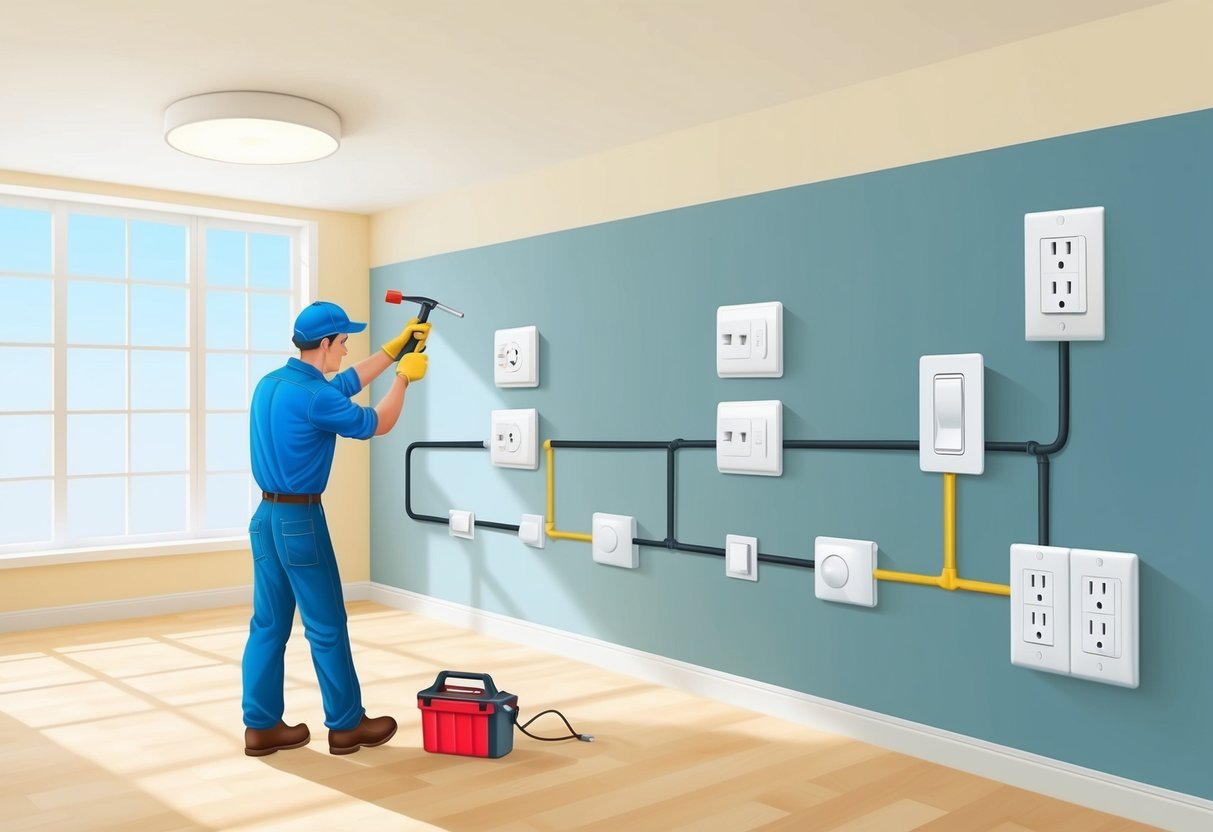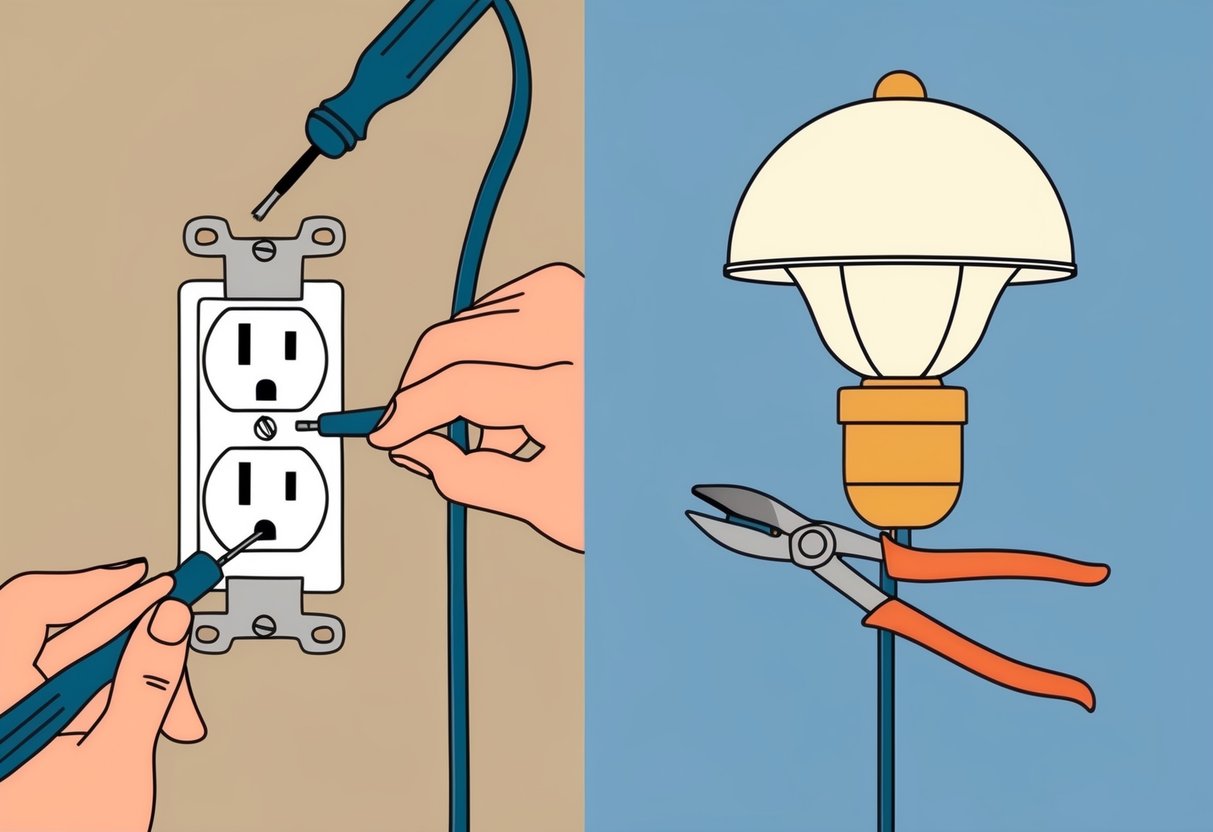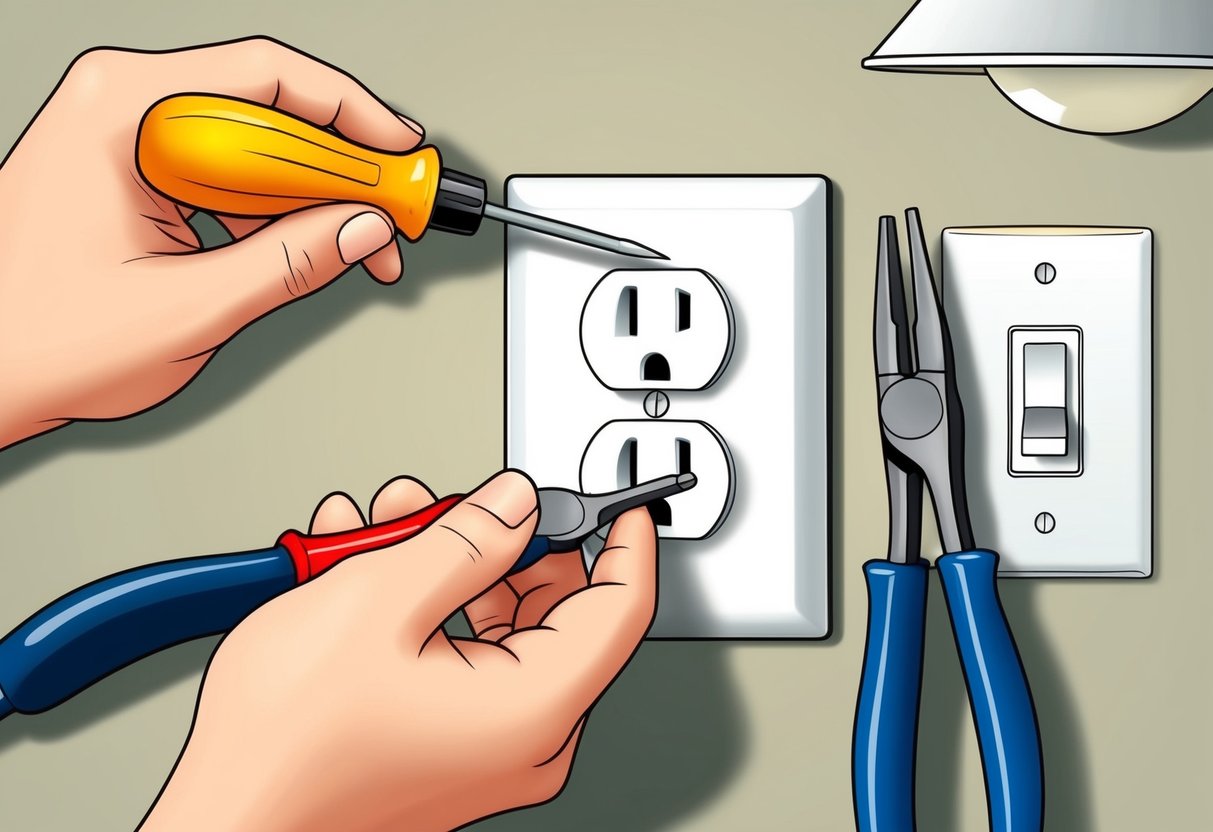
When to Call a Licensed Electrician

Not every electrical issue is safe for do-it-yourself repairs. Serious concerns or complex upgrades require the expertise, tools, and safety knowledge that only a professional can bring.
Situations Beyond DIY Repairs
Certain tasks go well beyond basic outlet or light fixture replacement. If an electrical device is sparking, outlets have burn marks, or switches are hot to the touch, immediate attention by a licensed electrician is critical.
Frequently tripping circuit breakers, persistent power outages, or flickering lights across multiple rooms often signal underlying wiring problems that should not be handled by amateurs. Working inside your electrical panel, running new circuits, or addressing damaged wiring demands advanced technical skills and knowledge of local codes.
Attempting these repairs without the proper background can lead to serious injury or even fire hazards. Homeowners should also avoid any work involving aluminum wiring, knob-and-tube systems, or complex grounding and bonding issues, as these are best left to qualified professionals.
When unsure if a project is safe for DIY, a good rule is to avoid any repairs that reach beyond outlets, switches, or light fixtures. For more details on when to step back and consult a professional, see this overview about DIY vs. professional electrical repairs.
The Value of a Professional Electrical Contractor
Hiring a licensed electrician or electrical contractor ensures that all electrical equipment is installed correctly and complies with current safety standards. These professionals are trained to identify potential hazards, perform thorough inspections, and provide warranties on their work.
This level of expertise helps avoid code violations, failed home inspections, and voided insurance claims caused by improper DIY work. An electrical contractor brings the right tools and diagnostic equipment to quickly identify faults and prevent future issues.
Their work is also covered by liability insurance, reducing homeowner risk if something goes wrong. With years of experience, they provide peace of mind and safety while saving time and unnecessary expenses from failed DIY attempts.
Licensed electricians also have access to up-to-date knowledge on new technologies, including smart home devices and energy-efficient upgrades. This means they can troubleshoot not only traditional wiring systems but sophisticated modern electrical systems as well.
Planning Complex Home Improvement Projects
Large-scale home improvement projects often require electrical work that goes beyond basic repairs. Examples include adding new rooms, home offices, or outdoor living spaces.
When these projects involve moving or upgrading service panels, relocating outlets or switches, or adding dedicated circuits for heavy appliances, a licensed professional is crucial. A qualified electrical contractor can assist in project planning by assessing load requirements for new electrical devices, ensuring proper circuit protection, and handling necessary permits.
They also coordinate with other trades, such as HVAC or plumbing, to prevent conflicts between electrical equipment and other building systems. Bringing in a licensed electrician early in the planning stage helps identify challenges before they become costly problems.
This approach ensures that the electrical system expansion supports present and future needs while staying fully code-compliant. For more information on recognizing when to involve a skilled professional, visit this resource about calling an electrician for home improvements.
Frequently Asked Questions

DIY repairs of outlets, switches, and light fixtures require strict attention to electrical safety, correct installation techniques, and proper use of tools. Problems like sunken outlets, loose boxes, or inadequate support can be addressed with commonly available solutions, but knowing when to hire a licensed electrician is essential.
What are the steps to safely repair a sunken light switch?
Before any repair, it is critical to shut off power at the circuit breaker and confirm power is off using a voltage tester. Remove the plate cover and check if the switch sits back from the wall surface.
If the switch is sunken, spacers or shims can be stacked behind the mounting ears to level the switch with the wall. Retighten the mounting screws, ensuring the switch is firmly positioned before reinstalling the cover plate.
How can I fix an outlet box that has become detached from the wall?
If an outlet box pulls away from drywall, it can be resecured using repair clips, new mounting screws, or an old-work electrical box with built-in clamps designed for retrofit installations. Ensure the box is flush with the finished wall surface for safety and proper code compliance.
Turn off power before adjusting wiring or the box itself. Test the outlet after reinstallation to ensure secure mounting and normal operation.
When is it necessary to use an electrical box extender?
Electrical box extenders are necessary when outlets or switches are recessed too far back in the wall, especially after tile, beadboard, or paneling upgrades. Extenders bring the device mounting plane flush with the wall face, which reduces fire and shock risks.
These accessories are made from non-conductive plastic and are permitted for use in residential wiring projects according to building codes.
What are the risks associated with a sunken outlet and how can it be corrected?
A sunken outlet can create gaps that expose wiring, increasing the risk of arching, electrical fires, or shock hazards. Building codes require receptacles to be flush with or project slightly beyond finished wall surfaces for safety.
To correct a sunken outlet, installers can add an electrical box extender to eliminate gaps and restore a safe, code-compliant setup. See more about the dangers and repairs of recessed outlets at this guide on electrical outlet problems and solutions.
How can outlet spacers be utilized in electrical repair?
Outlet spacers, also known as shims, are designed to bridge the gap when outlets or switches are set too far behind the wall. They are installed over the device mounting screws, stacking as needed to align the device with the wall.
Spacers are a quick and cost-effective solution, ensuring the device’s faceplate fits tightly and securely, preventing movement and minimizing strain on connections.
What are the typical costs involved in hiring a professional to replace light switches and outlets?
Hiring a professional electrician to replace light switches and outlets usually costs between $100 to $250 per device. The price depends on local rates and specific project challenges.
Costs may be higher for GFCI outlets or complex wiring needs. Situations requiring circuit upgrades can also increase the price.
If multiple devices are replaced during a single visit, per-unit charges may decrease. Always request an itemized estimate in advance.